
|
 |

Home / Product Reviews
Gourmet News & Views
June 2006
Click here to return to current month’s news
6.26.06
Vodka Hits New Haute. It may cost millions to become a vintner, but for $15,000, 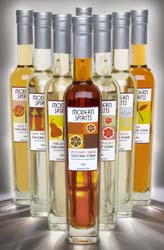 you can produce your own superpremium vodka. Southern California-based Modern Spirits, which recently launched its own line of Haute flavored vodkas (more about them in a moment), invites those with a passion to create their own unique flavored vodka to belly up to the distillery. There, they can create their one-of-a-kind flavored spirit. The company leads clients through a five-step process to produce their custom creation, starting with a flavor profile that identifies their passions, personalities and palates. The process can take two months or more to create a perfectly matched flavored vodka. No one comes to create citron or orange vodka—you can buy that off the shelf. It’s the opportunity to create something truly memorable: one client developed Lavender Honey that evoked the time he spent in the South of France. you can produce your own superpremium vodka. Southern California-based Modern Spirits, which recently launched its own line of Haute flavored vodkas (more about them in a moment), invites those with a passion to create their own unique flavored vodka to belly up to the distillery. There, they can create their one-of-a-kind flavored spirit. The company leads clients through a five-step process to produce their custom creation, starting with a flavor profile that identifies their passions, personalities and palates. The process can take two months or more to create a perfectly matched flavored vodka. No one comes to create citron or orange vodka—you can buy that off the shelf. It’s the opportunity to create something truly memorable: one client developed Lavender Honey that evoked the time he spent in the South of France.
Due to the complicated artisan nature of creating the vodka, and the time-consuming need to comply with Federal regulations for each client, a minimum production of ten cases is required. Haute can only accept 25 clients a year with minimum orders starting at $15,000 for ten cases. The price tag of $150 per bottle is the same as a bottle of tête de cuvée champagne; for a corporate gift or a high roller, it’s a gift that’s sure to generate buzz. Whether or not you have the big bucks, if you like vodka, Haute has quite an haute concept in its retail line of small-batch vodkas in perfume-quality glass bottles (affordable at $23 and up for the 375 ml size to up to $49.99 for 750 ml, depending on flavor). One can only imagine a tasting dinner built around these:
- Tea Vodka, steeped with three different tea blends to create a highly complex spirit, ideal as an aperitif or digestif. Also serve with caviar, smoked and dried fish, duck, kabobs and pilafs with dry fruit and nuts.
- Candied Ginger Vodka, a natural pairing for sushi, seared tuna, shrimp and mango curry, and Jamaican spice cake.
- Grapefruit Honey Vodka, great to serve with seared sea scallops, cold shrimp, poached fish or roast chicken.
- Pear Lavender Vodka, ideal to enjoy with grilled pork chops, foie gras, dry cheeses, crème brûlée or cheesecake.
- Celery Peppercorn Vodka pairs well with steaks, charcuterie, cold tomato soup, ceviche and grilled seafood.
- Black Truffle Vodka, is delicious with risotto, roasts, lobster, escargot, boeuf bourguignon and earthy cheeses.
- Chocolate Orange Vodka, is perfect as a dessert drink or with semi-sweet desserts, truffles and vanilla semifreddo.
If you want to try them before you buy them, the vodkas are available in most Southern California and Las Vegas bars and restaurants, with a few outposts in Atlanta and the Bay area. A bit limited at the moment, but it will evolve.
The Swiss Prefer... Mozzarella. In the bucolic valley of Emmental, home of the famous Swiss cheese with holes (or eyes, as they are more properly known), dairy farmer Hans Bieri is known as a leader of the hottest cheese trend in Switzerland: mozzarella. In 1994, he imported water buffalo from Romania into his village of Schangnau (population 954) to make buffalo’s milk mozzarella, which is considered the finest mozzarella. (Buffalo’s milk has a much higher fat content, twice that of dairy cows, and has been measured at 12 percent, which is the fat content of cream). Bieri sold his milk to local cheesemakers who began to transform it into mozzarella, and the paradigm shift began. Major food companies including Emmi, the largest dairy producer in Switzerland, began to make less expensive cow’s milk mozzarella. The Swiss, who eat about 43 pounds of cheese per year per capita, compared with about 31 pounds per year for Americans, proved to loves the fluffy white stuff as much as Americans and Italians: water buffalo mozzarella became the country’s number-one cheese, with each Swiss consuming roughly 12 pounds of it a year, according to an accounting in The New York Times. The runaway success has turned tiny Schangnau into the mozzarella capital of Switzerland. The Italian name mozzarella di bufala is protected by law, so the Swiss cheesemakers have adopted the german name, Büffelmozzarella. The Swiss can’t make enough to satisfy demand: imports from Italy have skyrocketed, although imports of regular cow’s milk mozzarella have dropped substantially.
Cheesecake Alley. Manhattan’s Schubert Alley, which connects 44th Street and 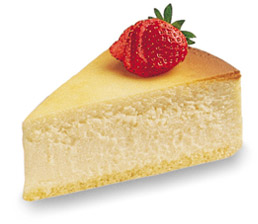 45th Street in the theatre District, is now “cheesecake alley” thanks to the opening of an outpost of Brooklyn’s Junior’s Restaurant. Founded in 1950, the restaurant offers a regular menu plus ten flavors of cheesecake including classic plain, cherry, raspberry swirl, 4 varieties of chocolate, pumpkin and sugar-free. Now visitors to New York can see what all the fuss is about without figuring out how to get to Brooklyn, and Manhattanites don’t have to hop the subway to get their fix. If you think cheesecake is no big news, Mayor Michael Bloomberg took time from his busy schedule to cut the ribbon at the opening ceremony—and he could have a cheesecake delivered anyplace, anytime. You can order online anytime, at JuniorsCheesecake.com. 45th Street in the theatre District, is now “cheesecake alley” thanks to the opening of an outpost of Brooklyn’s Junior’s Restaurant. Founded in 1950, the restaurant offers a regular menu plus ten flavors of cheesecake including classic plain, cherry, raspberry swirl, 4 varieties of chocolate, pumpkin and sugar-free. Now visitors to New York can see what all the fuss is about without figuring out how to get to Brooklyn, and Manhattanites don’t have to hop the subway to get their fix. If you think cheesecake is no big news, Mayor Michael Bloomberg took time from his busy schedule to cut the ribbon at the opening ceremony—and he could have a cheesecake delivered anyplace, anytime. You can order online anytime, at JuniorsCheesecake.com.
Dark Chocolate Sales Expected to Rise. According to a study conducted by Packaged Facts, gourmet chocolate sales will top $1.8 billion in the next four years. The report, entitled “Gourmet Chocolate in the U.S.,” shows that while high-end chocolate currently accounts for about 10 percent of chocolate sales, its compound annual growth rate, 10.5 percent, was far above that of chocolate candy overall, 1.8 percent, in the sales period from 2001 to 2005. Sales are expected to continue to rise about 6.4 percent annually through 2010. Much of the sector’s increase in success can be attributed to the sale of higher-priced chocolate in mass retail and discount chains. Lindt-Spruengli, manufacturers of Lindt chocolate, is currently the leader in super-premium chocolate, accounting for 35.1 percent of the market. However, Lindt could be facing competition from the mounting number of mainstream companies that are introducing gourmet chocolates. Hershey’s acquisition of Scharffen Berger Chocolate and Joseph Schmidt in 2005 and Mars’ launch of the upscale Ethel’s and health-conscious CocoaVia lines are two examples of major brands hoping to ride fine chocolate’s wave of popularity.
“Gourmet Chocolate in the U.S.” also cites recent studies on the health benefits of dark chocolate (high in antioxidants, lowers blood pressure and decreases LDL cholesterol) as one of the driving factors behind gourmet chocolate’s soaring sales. In fact, sales of all varieties of dark chocolate, which make up only 2.8 percent of the chocolate market, are expected to constitute 61 percent in 2010, according to independent market analyst Datamonitor. Editor’s note: health benefits refer to chocolate with cocoa content of 70 percent or higher; 85 percent is considered to be the optimum level. Much “dark chocolate,” especially sold through mass channels, is 55 to 60 percent.
Click here to explore some of best dark chocolates, reviewed by THE NIBBLE.
New Products Watch: PomaGrand™ and Pom Teas. Odwalla, the nation’s leading health beverage brand, is giving Pom Wonderful a run for their money. Riding the crest of the pomegranate wave, Odwalla has added three flavors to its juice lineup via a new brand, PomaGrand™, offering 100 percent juices in three varieties: straight Pomegranate Juice plus two blends, Pomegranate Mango (pomegranate, apple juice, and mango purée) and Pomegranate Berry (pomegranate, apple juice, strawberries, blueberries, and raspberries). Each flavor also contains wild berry extract, a blend of elderberries, chokeberries, blueberries and black currant. The PomaGrand juices are packaged in 15.2 ounce plastic bottles and are available in supermarkets nationwide.
Not to be outdone, Pom Wonderful has expanded its line of pomegranate products to include new Pom Teas. Brewed from hand-picked whole-leaf teas, the all-natural beverages are packaged in 13.5 ounce reusable drinking glasses and are available in the following flavors: Pomegranate Black Tea, Pomegranate Lychee Green Tea, Pomegranate Peach Passion White Tea (peach and passionfruit juice with white tea and pomegranate) and Pomegranate Blackberry Black Tea. In addition, all of the Pom Teas feature POMx, a patent-pending potent polyphenol antioxidant extract made from pomegranates. Pom Teas are available at supermarkets nationwide and price varies by retailer.
6.19.06
7-Up®: Not So Natural. It surprised more than a few people that the maker of 7-Up* is now promoting the carbonated beverage as “100 percent natural.” The lemon and lime flavors may be natural instead of artificial, but the drink is still sweetened with high fructose corn syrup (HFCS), a product that is artificially made by extracting starch from corn and altering it with enzymes or acids. High fructose corn syrup, which is a cheaper substitute for cane sugar, has been attributed to rising obesity rates over the past 25 years. The manufacturer claims that HFCS is in fact natural, because sugar made from corn is made virtually the same way as many ingredients that are called natural.
*Dr Pepper/Seven Up Bottling Group is owned by Cadbury Schweppes, the world’s largest confectionery company, which also owns Halls, Trident, Snapple, Trebor, Dentyne, Bubblicious and Bassett brands.
A loophole in the law is, in fact, on their side. While the term “organic” is defined six ways to Sunday by the FDA, the term “natural” is not currently defined for most foods (for meats and poultry there is a definition that says there can be no artificial ingredients, but all other foods can be called natural with no clear definition). Thus, a manufacturer can market a line of foods that includes artificial ingredients and label it “natural food” without violating any law. In addition, an “all natural” label does not mean nutritious even if the ingredients are all natural: the product may be high in sugar, salt or fat. The FDA has been asked to define what “natural” means, but for now the agency says manufacturers’ labels must be truthful and not misleading. 7-Up should revise its claims. Those looking for truly natural sodas need look no further than the splendid specialty brands, several of which have been reviewed by THE NIBBLE in our Soft Drinks section.
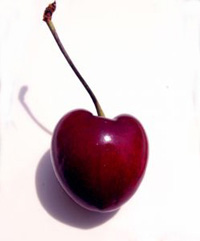 Cherry Season Begins. Cherry season is upon us, and it’s off to an auspicious start. In Washington, the harvest of Bing and Rainier cherries began last Monday, and is expected to peak on the 27th. Washington farmers anticipate that this year’s crop of cherries will approach record numbers. Health-conscious consumers should be seeking out Bing cherries in record numbers this season as well. In March, Agricultural Research Service, the U.S. Department of Agriculture’s primary scientific research agency, released findings that Bing cherries may help fight the inflammation of arthritis, heart disease, and cancer. Cherry Season Begins. Cherry season is upon us, and it’s off to an auspicious start. In Washington, the harvest of Bing and Rainier cherries began last Monday, and is expected to peak on the 27th. Washington farmers anticipate that this year’s crop of cherries will approach record numbers. Health-conscious consumers should be seeking out Bing cherries in record numbers this season as well. In March, Agricultural Research Service, the U.S. Department of Agriculture’s primary scientific research agency, released findings that Bing cherries may help fight the inflammation of arthritis, heart disease, and cancer.
Air For Sale (And It’s Flavored!). With sales of water on the rise, 7-Eleven® is turning to the only product more ubiquitous: air, or more specifically, oxygen. Though oxygenated air was heralded as the next big thing during the nineties, and then failed to gain popularity in the United States, 7-Eleven believes there is a market for it in Japan. On Wednesday, the convenience store chain debuted a new oxygen-in-a-can product, named O2 Supli, in all 11,000 of its Japanese stores. The air debuted with a choice of two flavors, grapefruit or mint, and comes packaged in cans with plastic breathing masks attached. The air inside these cans has a 95 percent oxygen concentration, compared to the 21 percent oxygen in normal air. Super-oxygenated air supporters claim that breathing it increases energy, and they often cite oxygen’s ability to cure hangovers. If they only could claim that calorie-free air helped dieting, it would fly off the shelves in the U.S.!
Smoking or Nonsmoking, Dog or Nondog? “Fido, party of four, your table is ready.” The Chicago City Council considers an ordinance this month that would let dogs eat next to people in outdoor cafes. In what could be the next great war of entitlement, Chicago would join a small but growing number of cities willing to adjust  or overlook health codes to appease a public hungry to include pets in the dining experience. Chicago was named the most dog-friendly city in the U.S. last year by Dog Fancy magazine, which cited the high number of dog-friendly businesses and public spaces. Dining establishments already flout the rules. Pet people often don’t want to be separated from their loved ones; non-pet people don’t want to sit adjacent to nonhumans, many of whom are just slightly better behaved than screaming children. In Alexandria, Virginia and Long Beach, California are dog-friendly towns; and in Florida this month, Governor Jeb Bush signed a “doggie dining” bill, which created a three-year pilot program letting restaurants choose to allow dogs to dine outside with their owners. Programs focus on outdoor cafes, not indoor dining (which is limited to service dogs); however, cafe seats are often deemed to be the choice spots. While it doesn’t seem to be too much of a deal, there are a substantial number of people with allergies and phobias; The most progressive of states, California does not invite pets to the table, indoors or out; nor does New York. Both states, considered to be America's gastronomic leaders, have health code regulations that force diners to keep their nonworking pets off restaurant property; although pocket pups have been known to sneak in in designer totes. While most people have a fondness for dogs and don’t understand why Fido can’t join them at the table, as he does at home, such attitudes exasperate city officials, who emphasize that dogs are, in fact, animals. Some “can contaminate a dining area,” said Frances Guichard, director of the food protection program for the Chicago Department of Public Health. “The law says they're not supposed to be there.” Point well taken: one accident could clear an area quickly—and kill the evening for the neighboring guests. “Forget the obvious concerns about health and sanitary issues,” said Rick Sampson, president and chief executive of the New York State Restaurant Association“All it’d take is one dog to bite someone, and you'd be open to a lawsuit.” or overlook health codes to appease a public hungry to include pets in the dining experience. Chicago was named the most dog-friendly city in the U.S. last year by Dog Fancy magazine, which cited the high number of dog-friendly businesses and public spaces. Dining establishments already flout the rules. Pet people often don’t want to be separated from their loved ones; non-pet people don’t want to sit adjacent to nonhumans, many of whom are just slightly better behaved than screaming children. In Alexandria, Virginia and Long Beach, California are dog-friendly towns; and in Florida this month, Governor Jeb Bush signed a “doggie dining” bill, which created a three-year pilot program letting restaurants choose to allow dogs to dine outside with their owners. Programs focus on outdoor cafes, not indoor dining (which is limited to service dogs); however, cafe seats are often deemed to be the choice spots. While it doesn’t seem to be too much of a deal, there are a substantial number of people with allergies and phobias; The most progressive of states, California does not invite pets to the table, indoors or out; nor does New York. Both states, considered to be America's gastronomic leaders, have health code regulations that force diners to keep their nonworking pets off restaurant property; although pocket pups have been known to sneak in in designer totes. While most people have a fondness for dogs and don’t understand why Fido can’t join them at the table, as he does at home, such attitudes exasperate city officials, who emphasize that dogs are, in fact, animals. Some “can contaminate a dining area,” said Frances Guichard, director of the food protection program for the Chicago Department of Public Health. “The law says they're not supposed to be there.” Point well taken: one accident could clear an area quickly—and kill the evening for the neighboring guests. “Forget the obvious concerns about health and sanitary issues,” said Rick Sampson, president and chief executive of the New York State Restaurant Association“All it’d take is one dog to bite someone, and you'd be open to a lawsuit.”
Real Coffee For Real People. Last week we reported that coffee consumption was up in America. It’s not just Starbucks®—in fact, three ubiquitous food chains are doing their best to be sure you have no need to go near a Starbucks. Dunkin’ Donuts, McDonald’s and Burger King are serving up hot java—perhaps not to the Starbucks coffee snob, but to anyone else looking for a good cup of Joe. Dunkin’ Donuts has thrown down the gauntlet, seeking to democratize espresso. For years, nearly 65 percent of its sales have come from coffee: now they hope it will come from lattes, Latte Lite and Turbo Ice, cappuccino and flavored coffees. The burger chains, true to their heritage, offer a good, straightforward cup of coffee—no macchiato, no cappuccino. Yet, this is not the same old, same old: the new coffees are richer and stronger, to appeal to the customer who has become accustomed to the Starbucks brew. All three seek a bigger pour of the booming $8.4 billion retail coffee market (and that is just the amount sold in coffee shops—Starbucks accounted for $6.1 billion of the total in 2005, up from $3.7 billion in 2003). Since McDonald's began promoting its premium coffee several months ago, the company says, its coffee sales have increased at a double-digit rate. And it says that more customers are coming into its restaurants in response to the campaign. Burger King said sales of its BK Joe, which comes in both regular and “turbo strength,” have been steady. No one has to learn the difference between Venti and Grande, and no one has to suffer sticker shock: an average 12-ounce cup of McDonald's Premium Roast coffee is 99 cents.
McDonald's has 13,700 units in the United States, Starbucks has more than 8,100 stores, Burger King has more than 7,200. Dunkin’ Donuts has 4,950, which has plans to triple its stores by 2020. According to the market research firm Mintel International Group, coffeehouses in the United States had more than $5.4 billion a year in sales in 2003. In 2005, that number was up 53 percent, to nearly $8.4 billion.
What Lunch Hour? According to a KFC survey of 1,013 adult workers 20 and older conducted in May, the lunch hour is becoming a myth. When it comes to eating lunch, time-starved employees take less than 30 minutes to eat and concentrate on other things:
- 62.7% of workers consider the 60-minute lunch hour the biggest myth in office life
- 57.9% eat lunch at their desk while continuing to work
- 55.6% multitask during lunch (28.9% eat and run errands, 26.7% eat and e-mail or shop online)
- 51.8% take 30 minutes or less for lunch
- 21.9% eat at a restaurant or other eatery
- 20.2% eat in the company cafeteria
A 2005 study by Grand Rapids, Michigan-based office furniture maker Steelcase similarly found that 55% of workers take half an hour or less.
- Workers in 2005 were spending 14% less time breaking for lunch—31 minutes, compared with 1996, when workers spent an average of 36 minutes a day for lunch.
Some lunches are being forfeited by employees faced with too much work and not enough time for personal errands. But companies also have come under fire for not granting their workers enough of a break. In 2005, a California jury awarded more than $172 million to more than 100,000 current and former Wal-Mart workers who claimed they were illegally denied lunch breaks and asked to clock back in before their breaks were over. Executives, professionals and other non-hourly employees are generally not entitled under federal law to any break for lunch, according to Robin Bond, an employment lawyer in Wayne, Pa. But employees who are paid hourly or who are covered under union collective bargaining agreements typically are supposed to get regular breaks, including a 30-minute lunch for five hours of work.
Follow Up On The Foie: It’s hard to believe that the “Hog Butcher for the World” has has become the first city in America, if not the world, to ban foie gras sales. But Chicago, yielding to pressure from animal rights activists, takes the brass ring. The first big foie gras ban took place last year, when California Governor Arnold Schwartzenegger signed a bill to ceases production and sales effective in 2012. Chicago, which unlike California is not home to a foie gras industry supporting and jobs, moved swiftly: the City Council voted in April and the law will go into effect on June 26. Anyone found selling or serving foie gras after then can be fined up to $500. Regardless of how one feels about animals as food supply, one must question the sense of picking on the tiny foie gras industry versus the very large seafood industry, where immeasurably more lobsters and crabs are plunged to their death in boiling water each day; or the beef industry, whose treatment of veal calves has been an issue for decades. Both seem a far more cruel fate than overfeeding ducks and geese so their livers enlarge. But, it’s not about sense; it’s about having an easy target. Most members of the public have never had foie gras, don’t want to, and can’t even pronounce it—so there’s not much sympathy for the elimination of it. But after all the foie gras states are taken care of, the activists will still need an agenda. And then, it’s your lobster, your veal...your steaks. So think about the bigger picture, when people with an agenda come knocking to solicit your vote. The food choice that will be legislated away next might be your favorite...and the “ethical issue” might be as ethical as the basic choice to eat meat in the first place.
6.12.06
Coffee Consumption Catches Up to Soft Drinks. If you’re enjoying your cappuccino more than your diet cola these days, you’re not alone. The National Coffee Drinking Trends (NCDT) market survey, just released by the National Coffee Association of the U.S.A., shows that American coffee consumption now equals that of soft drinks. It’s the third year in a row that coffee-drinking has shown growth, and the first time since 1990 that it has caught up to the soft drink market. The 2006 NCDT survey shows an increase both in the number of Americans who drink coffee (a jump from 80 percent in 2006 to 82 percent), those who enjoy it weekly (64 percent to 68 percent) and those who have it daily (53 percent to 56 percent).
While the increase in consumption spans all age groups, the study found the biggest rise among younger drinkers. The number of coffee drinkers between the ages of 18 and 24 was up from 16 percent in 2003 to 31 percent in 2006. The 25 to 39 age group also grew, an increase from 41 percent in 2005 to 47 percent in 2006.
To learn more about coffee, including how to identify flavors and aromas, click here to go to the coffee section of THE NIBBLE™.
Cupcake Lovers and Cake Bible Lovers, Rejoice! At the July 2006 NASFT Fancy 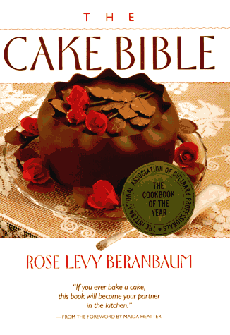 Food Show in New York City, the grand dame of cakes, Rose Levy Beranbaum, will launch three cake mix kits. Rose’s Heavenly Cake Kits, produced by gourmet food manufacturer Coastal Goods, will be available at retail shortly thereafter, featuring the recipes of the award-winning author of The Cake Bible and host of the PBS series “Baking Magic with Rose.” Rose’s Heavenly Cake Kits are made with premium ingredients such as Valrhona chocolate, the finest French-produced Madagascar Bourbon vanilla grains, Rumford baking powder, superfine sugar, and Green and Black organic cocoa. There are two Heavenly Cupcake Kits in Yellow Butter and Rich Chocolate, with separate mix-and-match Heavenly Frosting Kits in Golden Buttercream and Milk Chocolate Buttercream. The third Heavenly Cake Kit pays homage to Rose’s all-time favorite cake, Lemon Poppyseed Cake for baking in a decorative, fluted tube pan. New bakers and experienced-but-busy alike will want to try their hand with these. Food Show in New York City, the grand dame of cakes, Rose Levy Beranbaum, will launch three cake mix kits. Rose’s Heavenly Cake Kits, produced by gourmet food manufacturer Coastal Goods, will be available at retail shortly thereafter, featuring the recipes of the award-winning author of The Cake Bible and host of the PBS series “Baking Magic with Rose.” Rose’s Heavenly Cake Kits are made with premium ingredients such as Valrhona chocolate, the finest French-produced Madagascar Bourbon vanilla grains, Rumford baking powder, superfine sugar, and Green and Black organic cocoa. There are two Heavenly Cupcake Kits in Yellow Butter and Rich Chocolate, with separate mix-and-match Heavenly Frosting Kits in Golden Buttercream and Milk Chocolate Buttercream. The third Heavenly Cake Kit pays homage to Rose’s all-time favorite cake, Lemon Poppyseed Cake for baking in a decorative, fluted tube pan. New bakers and experienced-but-busy alike will want to try their hand with these.
New Product Line Watch: Organic Snack Foods for Children. Snikiddy, the Maryland-based company, has announced a new product line of organic snack food products for children, Snikiddy Snacks™. The line includes three products: 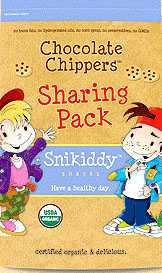 PizzaPiePuffs™, all-natural puffs in pizza flavor; BananaNibbles™, bite-size banana bread-like pieces, and ChocolateChippers™, organic dark chocolate chip cookies made with Rapadura™ sugar. Rapadura is an organic, unrefined sugar harvested in Brazil and known for its natural caramel flavor and greater nutritional value (the sugar stream is not separated from the molasses, which helps to retain essential nutrients, vitamins and minerals). PizzaPiePuffs™, all-natural puffs in pizza flavor; BananaNibbles™, bite-size banana bread-like pieces, and ChocolateChippers™, organic dark chocolate chip cookies made with Rapadura™ sugar. Rapadura is an organic, unrefined sugar harvested in Brazil and known for its natural caramel flavor and greater nutritional value (the sugar stream is not separated from the molasses, which helps to retain essential nutrients, vitamins and minerals).
All three organic snacks are preservative-free and trans fat-free but made with kids in mind—they taste similar to the familiar processed snacks so dear to young palates. Packaged with games and activities that promote physical fitness and mental stimulation, the snacks will be available for purchase in 12-packs online and in retail stores by the end of this summer. In the meantime, you can click here to find healthy snacks to include in lunch boxes.
6.5.06
Innovation Fund Announces it can Turn Water into Wine. Innovation Fund LLC, announced that it has patented and developed technologies that will allow consumers to screw its Flavor Tops caps onto any bottle of water and turn water into a vast variety of beverages. Consumers can take a plain bottle of water, and, with a Flavor Tops cap, turn it into an energy drink, a soft drink, iced tea, or even an alcoholic beverage. We can see a future where we carry around several flavor caps like pens or lipsticks, decide whether we want an iced tea, an energy drink or a wine cooler, and just screw on the appropriate flavor cap.
No Margarita For You! If you’re a tequila lover (and many of us are—in the last decade, tequila sales have grown by 77%, making it the fastest-growing spirit category), your ship is in port. The result of more than 200 years of tequila expertise, 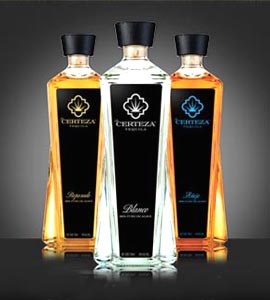 La Certeza, an estate-crafted, 100% blue agave, ultra-premium tequila, launched in the United States on June 1. Available in select markets initially, with national distribution by the end of 2006. There are three double-distilled tequilas in the family. La Certeza Blanco is agave nectar in its purest form with highlights of black pepper and citrus, especially crafted for those who prefer white spirits ($40.00). Small-batch Reposado has aromas of vanilla and butterscotch with roasted cinnamon and citrus ($45.00). Anejo, a limited-production, ultra-small-batch tequila is aged in traditional Cognac stills to achieve the greatest complexity and elegance. It yields flavors of roasted peppers, toasted almonds and vanilla beans ($60.00). The tequilas are made from hand-chosen, fully-mature agaves, all grown on the Beckmann Estate just outside the town of Tequila. Mix into a margarita and enjoy with a bowl of taco chips? No. Drink straight and learn to appreciate the nuances of great tequila? Sí! If Dad is a tequila fan, consider these for Father’s Day. For more information visit LaCerteza.com. La Certeza, an estate-crafted, 100% blue agave, ultra-premium tequila, launched in the United States on June 1. Available in select markets initially, with national distribution by the end of 2006. There are three double-distilled tequilas in the family. La Certeza Blanco is agave nectar in its purest form with highlights of black pepper and citrus, especially crafted for those who prefer white spirits ($40.00). Small-batch Reposado has aromas of vanilla and butterscotch with roasted cinnamon and citrus ($45.00). Anejo, a limited-production, ultra-small-batch tequila is aged in traditional Cognac stills to achieve the greatest complexity and elegance. It yields flavors of roasted peppers, toasted almonds and vanilla beans ($60.00). The tequilas are made from hand-chosen, fully-mature agaves, all grown on the Beckmann Estate just outside the town of Tequila. Mix into a margarita and enjoy with a bowl of taco chips? No. Drink straight and learn to appreciate the nuances of great tequila? Sí! If Dad is a tequila fan, consider these for Father’s Day. For more information visit LaCerteza.com.
We Get The Message. A research survey recently released by professional services provider ARAMARK found that American adults now report an average weight of 188.3 pounds, up 2.5 pounds over last year—a national increase in weight of about 550 million pounds according to recent U.S. Census data. At the same time, a survey by Harris Interactive suggests that messages regarding the potential benefits and risks of certain foods and nutrients are resonating with consumers. Many adult consumers are aware of the impact that whole grains, antioxidants and saturated and trans fats have on one’s health, whether it be positive or negative. In some cases, this knowledge has led to concerns, and in other cases it has led to actions, such as the increase in consumption of whole grains by many consumers. Manufacturers hear the message: Pepperidge Farm has just launched 100% Whole Wheat Soft Hamburger Buns and Hot Dog Buns as “an easy and delicious way to incorporate whole grains into your diet.” O.K., now we just have to connect the messages and get folks to cut down on the size of the fatty burger, the fatty cheese, and the sugar-filled ketchup they’re about to put on the “healthy” buns.
Buying Food Online. Online food, beverage and grocery sales are expected to climb 17 percent this year, to $6.2 billion, a 17 percent increase over 2005, according to The 2006 State of Retailing Online, the ninth annual Shop.org study of online retailing conducted by Forrester Research, Inc. That gain is part of a larger trend that will see online sales will top $200 billion this year, Forrester said last week. Among 174 retailers, total online sales, including travel, are expected to rise 20 percent to $211.4 billion this year. Total web sales had passed the $100 billion mark just three years ago. NIBBLE readers who find great products here and buy them online: you are part of the trend!
News Archives
| 2nd Quarter 2006 |
1st Quarter 2006 |
4th Quarter 2005 |
|
|
|
| 3rd Quarter 2005 |
2nd Quarter 2005 |
1st Quarter 2005 |
|
|
|
Send your product news to:
Info -at- TheNibble.com.
Substitute @ for -at-. We use this convention to avoid address-harvesting spam spiders.
Lifestyle Direct Direct, Inc. All rights reserved. Images are the copyright of their respective owners.

|



 you can produce your own superpremium vodka. Southern California-based
you can produce your own superpremium vodka. Southern California-based  45th Street in the theatre District, is now “cheesecake alley” thanks to the opening of an outpost of Brooklyn’s Junior’s Restaurant. Founded in 1950, the restaurant offers a regular menu plus ten flavors of cheesecake including classic plain, cherry, raspberry swirl, 4 varieties of chocolate, pumpkin and sugar-free. Now visitors to New York can see what all the fuss is about without figuring out how to get to Brooklyn, and Manhattanites don’t have to hop the subway to get their fix. If you think cheesecake is no big news, Mayor Michael Bloomberg took time from his busy schedule to cut the ribbon at the opening ceremony—and he could have a cheesecake delivered anyplace, anytime. You can order online anytime, at
45th Street in the theatre District, is now “cheesecake alley” thanks to the opening of an outpost of Brooklyn’s Junior’s Restaurant. Founded in 1950, the restaurant offers a regular menu plus ten flavors of cheesecake including classic plain, cherry, raspberry swirl, 4 varieties of chocolate, pumpkin and sugar-free. Now visitors to New York can see what all the fuss is about without figuring out how to get to Brooklyn, and Manhattanites don’t have to hop the subway to get their fix. If you think cheesecake is no big news, Mayor Michael Bloomberg took time from his busy schedule to cut the ribbon at the opening ceremony—and he could have a cheesecake delivered anyplace, anytime. You can order online anytime, at  Cherry Season Begins.
Cherry Season Begins. or overlook health codes to appease a public hungry to include pets in the dining experience. Chicago was named the most dog-friendly city in the U.S. last year by Dog Fancy magazine, which cited the high number of dog-friendly businesses and public spaces. Dining establishments already flout the rules. Pet people often don’t want to be separated from their loved ones; non-pet people don’t want to sit adjacent to nonhumans, many of whom are just slightly better behaved than screaming children. In Alexandria, Virginia and Long Beach, California are dog-friendly towns; and in Florida this month, Governor Jeb Bush signed a “doggie dining” bill, which created a three-year pilot program letting restaurants choose to allow dogs to dine outside with their owners. Programs focus on outdoor cafes, not indoor dining (which is limited to service dogs); however, cafe seats are often deemed to be the choice spots. While it doesn’t seem to be too much of a deal, there are a substantial number of people with allergies and phobias; The most progressive of states, California does not invite pets to the table, indoors or out; nor does New York. Both states, considered to be America's gastronomic leaders, have health code regulations that force diners to keep their nonworking pets off restaurant property; although pocket pups have been known to sneak in in designer totes. While most people have a fondness for dogs and don’t understand why Fido can’t join them at the table, as he does at home, such attitudes exasperate city officials, who emphasize that dogs are, in fact, animals. Some “can contaminate a dining area,” said Frances Guichard, director of the food protection program for the Chicago Department of Public Health. “The law says they're not supposed to be there.” Point well taken: one accident could clear an area quickly—and kill the evening for the neighboring guests. “Forget the obvious concerns about health and sanitary issues,” said Rick Sampson, president and chief executive of the New York State Restaurant Association“All it’d take is one dog to bite someone, and you'd be open to a lawsuit.”
or overlook health codes to appease a public hungry to include pets in the dining experience. Chicago was named the most dog-friendly city in the U.S. last year by Dog Fancy magazine, which cited the high number of dog-friendly businesses and public spaces. Dining establishments already flout the rules. Pet people often don’t want to be separated from their loved ones; non-pet people don’t want to sit adjacent to nonhumans, many of whom are just slightly better behaved than screaming children. In Alexandria, Virginia and Long Beach, California are dog-friendly towns; and in Florida this month, Governor Jeb Bush signed a “doggie dining” bill, which created a three-year pilot program letting restaurants choose to allow dogs to dine outside with their owners. Programs focus on outdoor cafes, not indoor dining (which is limited to service dogs); however, cafe seats are often deemed to be the choice spots. While it doesn’t seem to be too much of a deal, there are a substantial number of people with allergies and phobias; The most progressive of states, California does not invite pets to the table, indoors or out; nor does New York. Both states, considered to be America's gastronomic leaders, have health code regulations that force diners to keep their nonworking pets off restaurant property; although pocket pups have been known to sneak in in designer totes. While most people have a fondness for dogs and don’t understand why Fido can’t join them at the table, as he does at home, such attitudes exasperate city officials, who emphasize that dogs are, in fact, animals. Some “can contaminate a dining area,” said Frances Guichard, director of the food protection program for the Chicago Department of Public Health. “The law says they're not supposed to be there.” Point well taken: one accident could clear an area quickly—and kill the evening for the neighboring guests. “Forget the obvious concerns about health and sanitary issues,” said Rick Sampson, president and chief executive of the New York State Restaurant Association“All it’d take is one dog to bite someone, and you'd be open to a lawsuit.”
 PizzaPiePuffs™, all-natural puffs in pizza flavor; BananaNibbles™, bite-size banana bread-like pieces, and ChocolateChippers™, organic dark chocolate chip cookies made with Rapadura™ sugar. Rapadura is an organic, unrefined sugar harvested in Brazil and known for its natural caramel flavor and greater nutritional value (the sugar stream is not separated from the molasses, which helps to retain essential nutrients, vitamins and minerals).
PizzaPiePuffs™, all-natural puffs in pizza flavor; BananaNibbles™, bite-size banana bread-like pieces, and ChocolateChippers™, organic dark chocolate chip cookies made with Rapadura™ sugar. Rapadura is an organic, unrefined sugar harvested in Brazil and known for its natural caramel flavor and greater nutritional value (the sugar stream is not separated from the molasses, which helps to retain essential nutrients, vitamins and minerals).  La Certeza, an estate-crafted, 100% blue agave, ultra-premium tequila, launched in the United States on June 1. Available in select markets initially, with national distribution by the end of 2006. There are three double-distilled tequilas in the family. La Certeza Blanco is agave nectar in its purest form with highlights of black pepper and citrus, especially crafted for those who prefer white spirits ($40.00). Small-batch Reposado has aromas of vanilla and butterscotch with roasted cinnamon and citrus ($45.00). Anejo, a limited-production, ultra-small-batch tequila is aged in traditional Cognac stills to achieve the greatest complexity and elegance. It yields flavors of roasted peppers, toasted almonds and vanilla beans ($60.00). The tequilas are made from hand-chosen, fully-mature agaves, all grown on the Beckmann Estate just outside the town of Tequila. Mix into a margarita and enjoy with a bowl of taco chips? No. Drink straight and learn to appreciate the nuances of great tequila? Sí! If Dad is a tequila fan, consider these for Father’s Day. For more information visit LaCerteza.com.
La Certeza, an estate-crafted, 100% blue agave, ultra-premium tequila, launched in the United States on June 1. Available in select markets initially, with national distribution by the end of 2006. There are three double-distilled tequilas in the family. La Certeza Blanco is agave nectar in its purest form with highlights of black pepper and citrus, especially crafted for those who prefer white spirits ($40.00). Small-batch Reposado has aromas of vanilla and butterscotch with roasted cinnamon and citrus ($45.00). Anejo, a limited-production, ultra-small-batch tequila is aged in traditional Cognac stills to achieve the greatest complexity and elegance. It yields flavors of roasted peppers, toasted almonds and vanilla beans ($60.00). The tequilas are made from hand-chosen, fully-mature agaves, all grown on the Beckmann Estate just outside the town of Tequila. Mix into a margarita and enjoy with a bowl of taco chips? No. Drink straight and learn to appreciate the nuances of great tequila? Sí! If Dad is a tequila fan, consider these for Father’s Day. For more information visit LaCerteza.com.